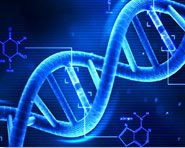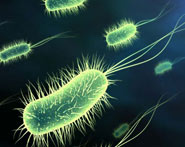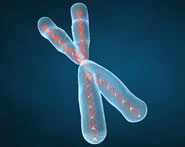


 النبات
النبات
 الحيوان
الحيوان
 الأحياء المجهرية
الأحياء المجهرية
 علم الأمراض
علم الأمراض
 التقانة الإحيائية
التقانة الإحيائية
 التقنية الحيوية المكروبية
التقنية الحيوية المكروبية
 التقنية الحياتية النانوية
التقنية الحياتية النانوية
 علم الأجنة
علم الأجنة
 الأحياء الجزيئي
الأحياء الجزيئي
 علم وظائف الأعضاء
علم وظائف الأعضاء
 الغدد
الغدد
 المضادات الحيوية
المضادات الحيوية|
أقرأ أيضاً
التاريخ: 27-9-2019
التاريخ: 22-11-2015
التاريخ: 6-9-2020
التاريخ: 22-11-2018
|
The external surface of any bone is, as a rule, covered by a membrane called periosteum (Fig. 7.1).
Note: The only parts of the bone surface devoid of periosteum are those that are covered with articular cartilage.
The periosteum consists of two layers, outer and inner. The outer layer is a fibrous membrane. The inner layer is cellular. In young bones, the inner layer contains numerous osteoblasts, and is called the osteogenetic layer (This layer is sometimes described as being distinct from periosteum). In the periosteum covering, the bones of an adult osteoblasts are not conspicuous, but osteoprogenitor cells present here can form osteoblasts when need arises e.g., in the event of a fracture. Periosteum is richly supplied with blood. Many vessels from the periosteum enter the bone and help to supply it.
Functions of Periosteum
- The periosteum provides a medium through which muscles, tendons and ligaments are attached to bone. In situations where very firm attachment of a tendon to bone is necessary, the fibres of the tendon continue into the outer layers of bone as the perforating fibres of Sharpey (Fig. 7.2). The parts of the fibres that lie within the bone are ossified; they have been compared to 'nails' that keep the lamellae in place.
- Because of the blood vessels passing from periosteum into bone, the periosteum performs a nutritive function.
- Because of the presence of osteoprogenitor cells in its deeper layer, the periosteum can form bone when required. This role is very important during development. It is also important in later life for repair of bone after fracture.
- The fibrous layer of periosteum is sometimes described as a limiting membrane that prevents bone tissue from 'spilling out' into neighbouring tissues. This is based on the observation that if periosteum is torn, osteogenic cells may extend into surrounding tissue forming bony projections (exostoses). Such projections are frequently seen on the bones of old persons. The concept of the periosteum as a limiting membrane helps to explain how ridges and tubercles are formed on the surface of a bone. At sites where a tendon pulls upon periosteum, the latter tends to be lifted off from bone. The 'gap' is filled by proliferation of bone leading to the formation of a tubercle (Such views are, however, hypothetical).




|
|
|
|
منها نحت القوام.. ازدياد إقبال الرجال على عمليات التجميل
|
|
|
|
|
|
|
دراسة: الذكاء الاصطناعي يتفوق على البشر في مراقبة القلب
|
|
|
|
|
|
|
مركز الكفيل للإعلان والتسويق ينهي طباعة الأعمال الخاصة بحفل تخرج بنات الكفيل الثامن
|
|
|